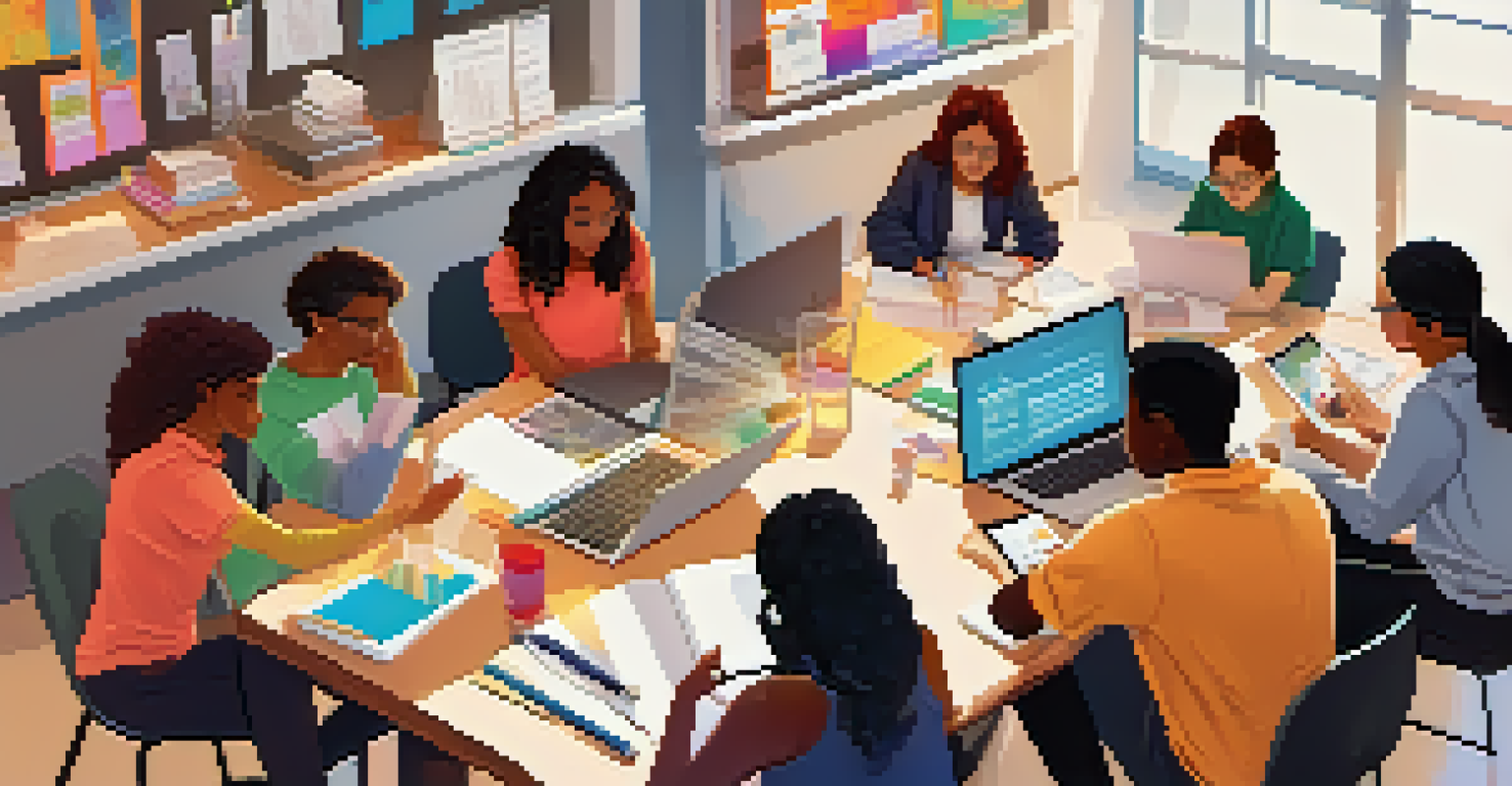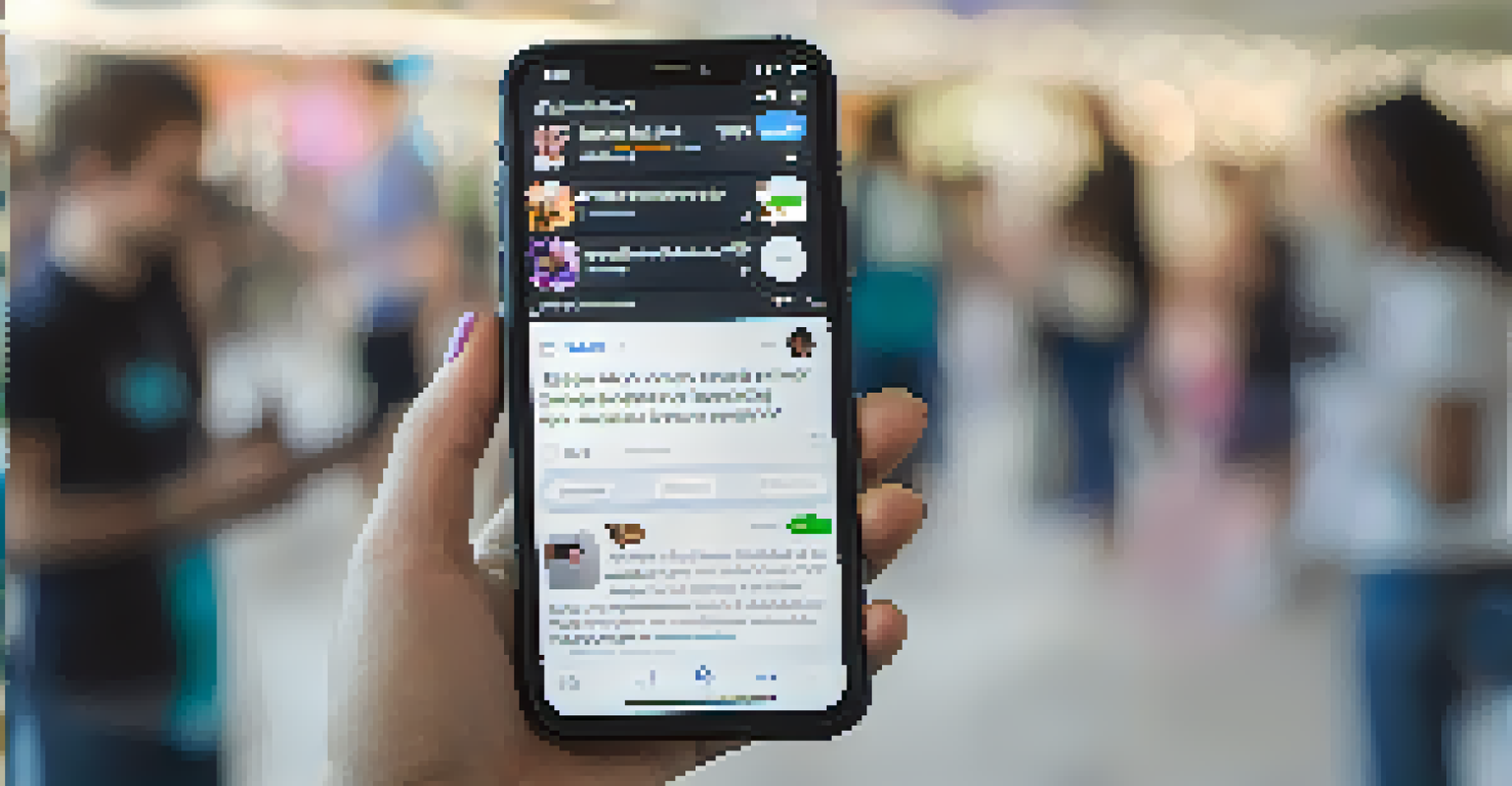Using Social Media to Enhance Virtual Learning Spaces

Understanding Social Media's Role in Education
Social media has revolutionized how we communicate, and its impact on education is significant. Platforms like Facebook, Twitter, and Instagram create spaces for sharing resources and sparking discussions. Educators can leverage these tools to enhance student engagement and foster a sense of community.
Social media is about sociology and psychology more than technology.
For instance, a dedicated Facebook group for a class can become a hub for sharing articles, videos, and insights related to the coursework. This not only keeps the conversation going outside the traditional classroom but also encourages students to explore topics in-depth. Additionally, social media can bridge the gap between students and teachers, making learning more accessible.
Moreover, the informal nature of social media can help break down barriers. Students may feel more comfortable asking questions or sharing thoughts in a less formal environment, which can lead to deeper learning experiences. By embracing social media, educators can create a more dynamic and interactive virtual learning space.
Creating Engaging Content for Virtual Learning
Content is king, especially in virtual learning environments. The challenge lies in creating engaging material that holds students' attention. Social media offers a variety of formats, such as videos, infographics, and live streams, that can make learning more appealing.

For example, educators can use platforms like TikTok to create short, informative videos on complex topics. These bite-sized pieces of content can simplify difficult concepts and make them more relatable. Additionally, sharing student-created content can foster creativity and ownership of the learning process.
Social Media Enhances Engagement
Platforms like Facebook and TikTok allow educators to create dynamic content that fosters student interaction and deeper learning.
Interactivity is another key aspect of engaging content. Polls, quizzes, and Q&A sessions on platforms like Instagram Stories or Twitter can promote active participation. When students feel like they are part of the content creation process, they're more likely to retain information and be invested in their learning.
Fostering Communication and Collaboration
One of the greatest advantages of social media is its ability to facilitate communication. In a virtual learning environment, fostering collaboration among students can be challenging, but social media can bridge that gap. By using platforms like Slack or Discord, students can communicate in real-time, share ideas, and work on group projects.
The more that you read, the more things you will know. The more that you learn, the more places you'll go.
Collaborative tools can also enhance peer-to-peer learning. For instance, a group of students working on a project can use a shared Google Doc and discuss their ideas through a dedicated chat channel on social media. This not only promotes teamwork but also helps students learn from each other's perspectives.
Moreover, establishing clear communication channels can help educators stay connected with their students. Regular updates and feedback through social media can keep everyone informed and engaged. This approach not only fosters a sense of community but also encourages accountability among students.
Building a Community for Support and Networking
Creating a sense of community is essential in virtual learning, and social media is an excellent tool for this. By encouraging students to connect outside of the classroom, educators can help them build relationships that support their learning journey. Online groups or pages dedicated to specific courses can create a sense of belonging.
For instance, alumni groups on LinkedIn can provide current students with networking opportunities and mentorship. This not only helps students feel connected to their peers but can also lead to valuable career connections. Encouraging students to share their experiences and insights can enhance the learning environment.
Fostering Community and Support
Online groups and networking opportunities help students build relationships and alleviate feelings of isolation in virtual learning.
Additionally, community building can alleviate feelings of isolation that sometimes come with online learning. Engaging discussions, shared resources, and collaborative projects can create a supportive atmosphere. When students feel like they are part of a community, they are more likely to thrive academically.
Utilizing Hashtags for Learning and Discovery
Hashtags are powerful tools for categorizing content and making it more discoverable on social media. By using relevant hashtags, educators can help students find materials related to their coursework or interests. This not only enhances their learning experience but also encourages independent exploration of topics.
For example, creating a unique hashtag for a course can allow students to share their insights, questions, and resources. This shared space can become a valuable repository for information and discussions. Students can also follow trending educational hashtags to discover new resources and connect with broader learning communities.
Encouraging students to participate in hashtag challenges can further enhance engagement. These challenges can promote creativity and critical thinking, as students explore and present their understanding of concepts. By integrating hashtags into the learning process, educators can help students navigate the vast world of online information.
Encouraging Feedback and Reflection
Feedback is crucial in education, and social media can provide a platform for both giving and receiving it. Educators can use social media to solicit feedback on their teaching methods or course materials. This can lead to improvements in the learning experience and demonstrate to students that their opinions matter.
Additionally, encouraging students to reflect on their learning through social media can enhance their understanding. For instance, students can share their thoughts on what they've learned each week and how it applies to real-world situations. This practice not only reinforces learning but also encourages critical thinking.
Navigating Challenges of Social Media
Establishing clear guidelines and teaching digital literacy can help combat issues like misinformation and cyberbullying in educational settings.
Moreover, using social media for reflection can create a culture of continuous improvement. As students engage in discussions about their learning experiences, they can support each other's growth. This collaborative approach can lead to more meaningful learning outcomes.
Addressing Challenges of Social Media in Education
While social media offers numerous benefits, it also presents challenges that educators must address. Issues like misinformation, cyberbullying, and distraction can impact the learning environment. Educators need to establish clear guidelines for social media use to create a safe and productive space.
For example, teaching students about digital literacy can empower them to discern credible sources from unreliable ones. This skill is vital not only for academic success but also for navigating the vast amount of information available online. Additionally, fostering a culture of respect and kindness can help combat negative behaviors on social media.

Ultimately, it's essential for educators to monitor social media interactions and intervene when necessary. By creating a supportive and respectful online atmosphere, educators can maximize the benefits of social media while minimizing its challenges. This proactive approach can lead to a more enriching virtual learning experience.